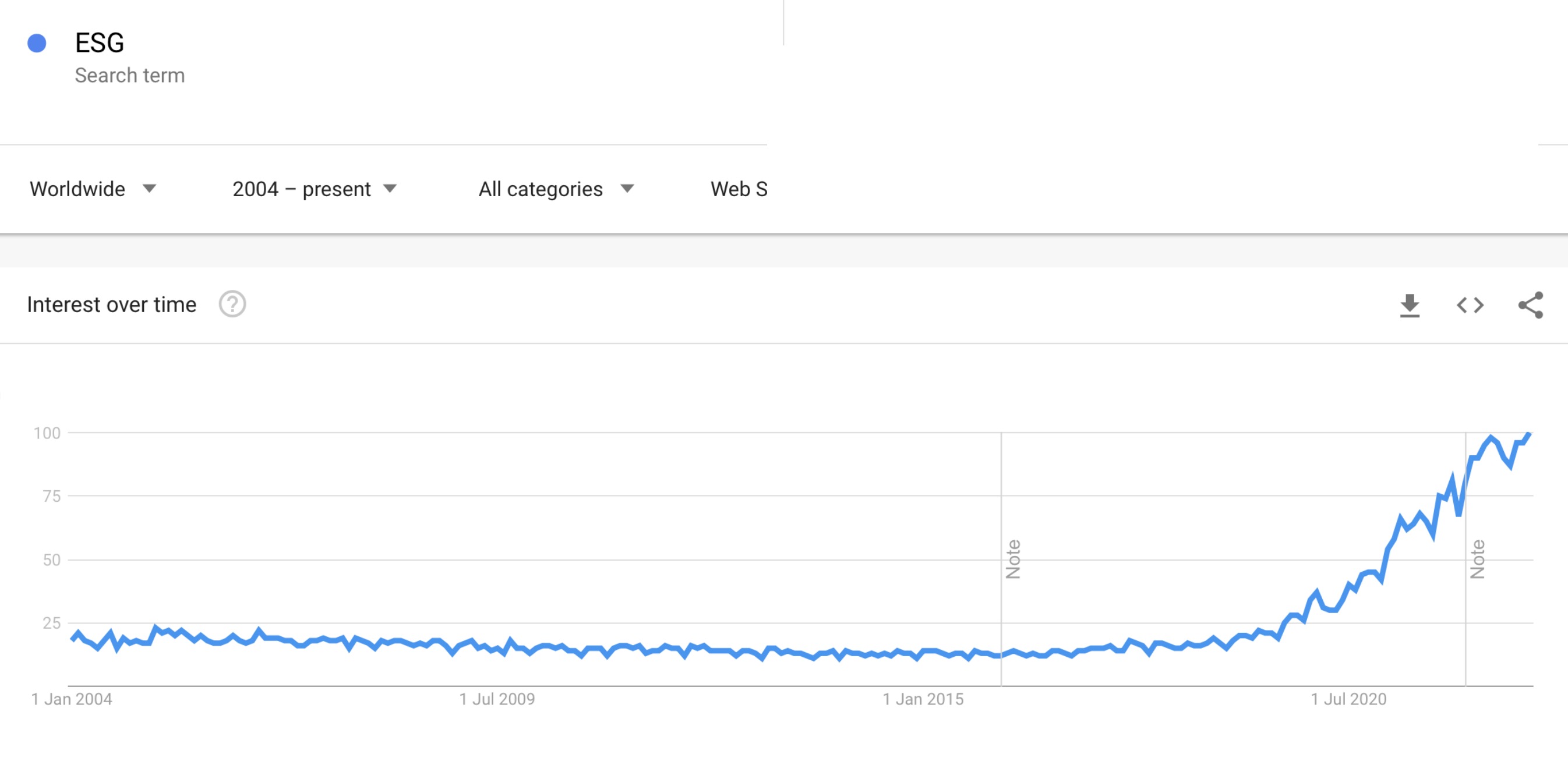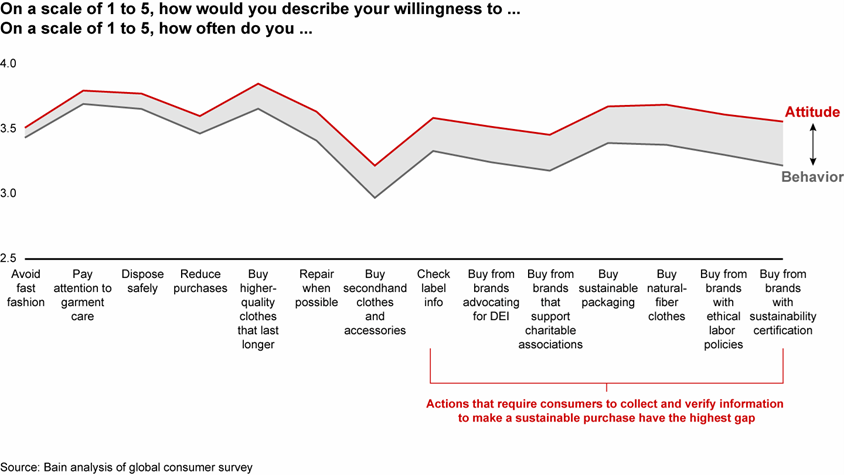ESG has a brand problem
We don't claim to be experts in ESG but we do know a thing or two about brand. And as more and more clients come to us with projects that include an aspect of ESG, we’re seeing the two worlds collide.
This is an interesting one for us, and was a topic of a recent Webinar we hosted. Now while we don’t claim to be experts in ESG, we do know a thing or two about brand. And as more and more clients come to us with projects that include an aspect of ESG, we’re seeing the two worlds collide.
Over recent years, ESG has become much more prominent in our work. Whether that’s to interpret, define or create comms around it, it’s clear this isn’t a marketing fad. It’s not going anywhere, and there are implications and real-world challenges for brands and businesses around how they incorporate it in their business.
What do we see happening, why, and what can you do about it?
First off – ESG isn’t a new phenomenon. Originally created by financiers in the 1960s the aim was to help investors make socially responsible decisions. But a quick look at Google trends (global data) shows the massive uptick the term ESG saw around 2018. Likely driven by various social movements – Black Lives Matter, Me Too, Extinction Rebellion – this started to move ESG on from its original roots and intent to a much broader proposition, placing it more in the domain of the public versus an investor audience.

But as ESG has made its way into the public domain, it doesn’t seem to have survived contact with the consumer, with brands struggling to make it credible and meaningful to a to a different (consumer) audience. And we know it’s something consumers care about:
- 52% of consumers take a brand’s eco-credentials into account when choosing a product.*
- 61% of consumers are making more environmentally friendly, sustainable, or ethical purchases.**
- 72% of consumers say that sustainability is an important purchase consideration.***
* YouGov Forces of Change Survey 2021
** Accenture COVID-19 Consumer Pulse Research—Wave 7
*** The Sustainability Disconnect Between Consumers & Retail Executives. Wharton School of the University of Pennsylvania
So what can brands do to help bridge the gap between a broad ESG strategy, and something that’s meaningful for consumers?
- Understand your business: being honest about where you are in your ESG journey is crucial to understanding how you’re going to share your story.
Undoubtedly, ESG is easier for some brands than for others. At one end of the spectrum you have what we call the ‘baked in’ approach – a very deliberate position relating to sustainability that’s driven by a founder’s mindset. ESG lives at the heart of every strategic and operational decision the business makes. ESG is the business. Think Allbirds or Patagonia.
At the opposite end of the spectrum you have the ‘sprinkled on’ approach. This is where we see questionable credentials with businesses appearing to follow a trend rather than build a strategy that’s believable and measurable. Ultimately, it feels performative. Brewdog is a good example here – starting off well and seemingly full of good ESG intentions, but it gradually went to shit, with various claims and failings that ultimately led to court battles and a loss of their BCorp status.
Finally, in the middle you have a more ‘layered in’ approach – and realistically this is where most businesses are. There’s an understanding that the world is changing, and businesses need to change along with it. So the business is slowly, over a period of time, layering in a variety of ESG commitments and initiatives.
We rarely see this succeed (in any sort of meaningful way) when it’s been driven at a grass roots level. Even if not driven by a founder mindset and cultural motivation, there needs to be a commitment and continued drive from leadership to layer in ESG in a way that keeps the organisation accountable.
The key takeout here? Be honest with yourself about where you are on the journey. If you’re sprinkled on, that’s a fine place to start as you move towards layering in various initiatives over time. Where you are shapes the story you’ll tell your customer, so make sure it’s credible and believable.
- Don’t talk about ESG: Be clear in your communication and be clear on what your consumers are looking for.
This shit is tricky. There’s a lot to talk about and it quickly gets very detailed and (often) confusing. On our recent webinar we talked about the broad range of topics that are covered under the ESG umbrella (Environmental, Social, Governance). So when it comes to comms, resist the temptation to pile it all into one thing – be clear where you stand and think carefully about how you communicate it.
Think about what your customers want to know, when and where they’ll be looking for it (hint: don’t just relegate ESG to the footer of your website). Talk about individual initiatives (ideally focused on specific UN Sustainability goals), and make sure they’re measurable and trackable to allow you to share benchmarks and progress along the way.
- Lean into the value: What’s the consumer outcome of the ESG activity? Tie it to a value-based conversation rather than a science-based activity.
One very important aspect of ESG comms is the focus on value, not features. When you think about the stats above [REF] and consider what’s known as the ‘behaviour gap’ shown in the Bain chart below – it’s clear people’s intentions don’t always translate into action.

- Where’s the brand sacrifice? Are we really all in this together?
Whether it’s giving up meat, using less energy or switching to EVs – when it comes to ESG the sacrifice tends to live with the consumer. Where’s the brand sacrifice? Again, this is easier for some businesses than others – it’s easier to sacrifice short-term profit when you’re not beholden to shareholders. But it can’t always be on the consumer to do more, pay more, care more.
We’re caught between two philosophies:
- To adapt to the challenges facing us on a global scale, business needs to ensure that “planet” and “people” are as important as “profit.”
- Business’s primary purpose is to produce the maximum return on the investment placed into that business.
The status quo is very powerful – and still heavily leaning towards a return for shareholders vs people and planet – so something needs to change. The likelihood is this will come from some sort of government intervention, regulation, measurement, and reporting requirement. Until then, is there much incentive for brands to make a ‘real’ sacrifice? Probably not.
- Be authentically you. Escape the sea of sameness.
You can probably pretty much correlate the increase in iStock’s share price with the rise in ESG as a search term. Trees, trees everywhere… Sticking an image of a tree on your social channels is the default position, but it just doesn’t cut it anymore. Consumers expect brands to take this stuff seriously and offer a point of view on the world. But it needs to feel real.
And that brings us back to basic branding principles – only if you’re very clear on how your organisation is defined by your own Vision, Mission and Values can you start to create and implement a credible and ownable ESG strategy.
So what’s the summary of all of this? Like I said at the start, ESG is a complex thing and incorporating it in brand comms can be tricky. But it doesn’t need to be overly complicated – think about how ESG relates to your brand and communicate your viewpoint, initiatives and progress in a way that’s simple and meaningful for your consumer. That might not solve all your ESG comms problems, but it's a pretty decent place to start.